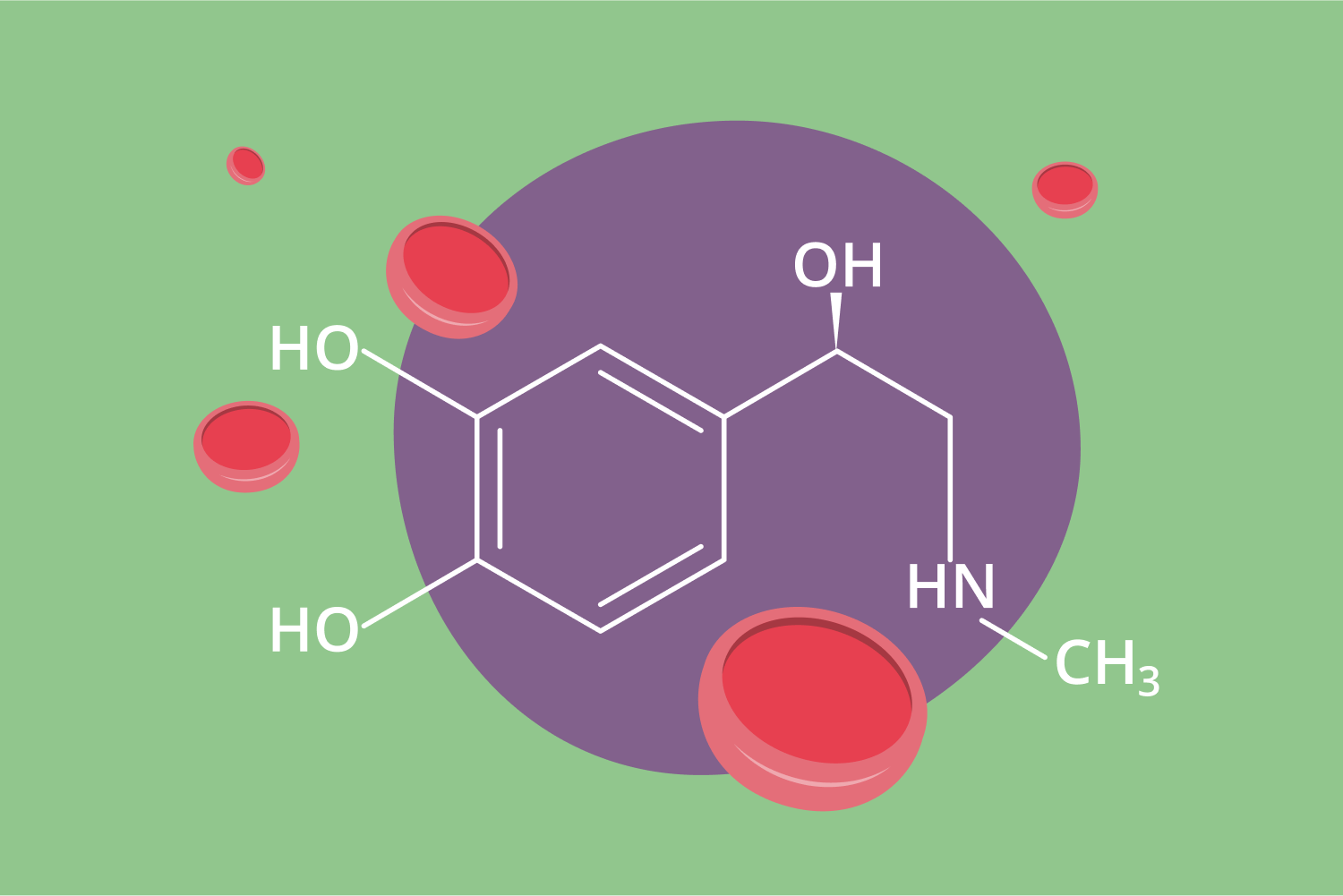Progesterone vs Progestin – What’s the Difference?

We all know that progesterone is a very important hormone for our reproductive health. However, when it comes to taking progesterone as a medication, the terminology and advice available in the hundreds of articles found online can get confusing fast!
In this article, we’ll review progesterone vs progestin, get some clarification on what each actually does, and explore what makes them similar and different. We’ll also take a closer look at the various situations where each of these medications is appropriate to prescribe.
Is there a difference between progesterone and progestin?
Yes. Progesterone is a reproductive hormone that is produced naturally in the body, and progestin is a synthetic version of progesterone. Progesterone and progestin each have their own unique chemical structures, however, progestins have similar properties to progesterone and may mimic certain functions in the body when taken as a medication.
Progesterone vs progestin
What is progesterone?
Progesterone is a term used to describe a type of steroid hormone found in both men and women. In women, progesterone is produced by the adrenal glands and the corpus luteum. It is also produced by the placenta during pregnancy. Progesterone is key to several reproductive processes both before and during pregnancy.
Before pregnancy, it helps with:
- Regulating the menstrual cycle
- Supporting fallopian tube functioning
- Controlling libido
- Assisting with implantation by thickening the uterine lining and inhibiting muscle contractions
During pregnancy, progesterone helps with:
- Preventing further eggs from being released through ovulation
- Preparing for labor by strengthening muscles in the pelvic wall
- Preventing early labor, infection, and disease by helping to build the cervical mucus plug
Progesterone is produced physically in the body, however, it can also be created in a laboratory to serve multiple medical purposes.
For example, micronized progesterone is produced so that it has an identical molecular structure to the natural progesterone found in the body. On the other hand, synthetic progesterone (known as progestins) may act similarly to progesterone however their chemical structure is different.
It is also possible to purchase over-the-counter progesterone supplements. These types of products are often advertised as “natural progesterone”, and they are most commonly made organically from ingredients such as soybeans and wild Mexican yams.
What is progestin?
Progestin is a term used to describe a synthetic form of progesterone that is prescribed as a medication. Progestins have similar properties to progesterone, however, their chemical structure is much different.
There are dozens of different progestins that can be prescribed by doctors, and some of the most common use-cases for progestin include the treatment of:
- Irregular periods
- Absent periods (known as amenorrhea)
- Premenstrual syndrome
- Certain hormone-driven cancers
- Precocious puberty
Progestins are also one of the primary components of both oral contraceptives and menopausal hormonal therapy (MHT).
How are they different?
The difference in chemical structure is what separates natural progesterone from progestins. However, it’s important to note that micronized progesterone has an identical structure to natural progesterone found in the body, whereas the chemical structure of progestins is much different.
How are they the same?
Even though progesterone and progestins have different molecular structures, they can still behave similarly in the body. This is because progestins are designed to interact with the body’s progesterone receptors and simulate the effects of natural progesterone.
Progesterone vs progestin: When to use each
When to use progesterone
Progesterone can be taken several different ways – including orally as a pill, vaginally as a gel or suppository, and it can also be injected. According to research published in the journal American Family Physician, progesterone may be helpful for treating irregular cycles, abnormal uterine bleeding, and absent periods. It may also be used in cases where a patient is at risk of endometrial hyperplasia.
There is also growing evidence that progesterone may also be used to treat infertility by helping with conception and preventing early miscarriage.

A little extra support from an expert can go a long way
Book an online consultation with one of our Hormone Health Coaches.
Schedule NowWhen to use progestin
Progestins are one of the primary components of hormonal birth control. In fact, certain birth control methods such as mini-pills, IUDs, and injections only use progestin. One of the main reasons for taking hormonal birth control is to prevent pregnancy, however, it can also be used to help regulate menstrual bleeding.
Progestins are also useful for treating pelvic pain and cramping due to menstruation, as well as easing symptoms related to menopause.
It’s important to note here that there are a number of potential side effects involved when taking progestins:
- Bloating
- Swelling of the ankles and feet (edema)
- Mental health challenges such as mood swings, anxiety, depression, and irritability.
- Increase in blood pressure
- Nausea and/or dizziness
- Acne
- Low libido
- Headache
- Increased risk of breast cancer
What about micronized progesterone? Is it safe and effective?
Yes. Micronized progesterone is completely safe and effective. It is derived from the yam plant, and it is identical in chemical structure to the progesterone that is produced in the body.
The two different types of micronized progesterone currently available include Prometrium and Crinone.
Prometrium can be taken orally, and it is most commonly used to help regulate menstrual cycles in women of reproductive age. It can also be used to help restore a woman’s period if it has been absent for several cycles. In women undergoing menopause, Prometrium can also be used to alleviate certain menopausal symptoms such as hot flashes and vaginal dryness.
Crinone is a type of micronized progesterone that is applied vaginally as a suppository. It is most commonly used to support women whose low progesterone levels prevent them from maintaining pregnancy. Similar to Prometrium, Crinone can also be used to help regulate the menstrual cycle and restore absent periods.
Progesterone and Progestin FAQ
Are there natural ways to raise progesterone?
When it comes to boosting your progesterone levels naturally without the help of medication, there are a few different strategies you can try:
- Sticking to a progesterone-friendly diet. Foods that are rich in protein, healthy fats, and fiber can all help to boost progesterone and balance your overall hormone levels.
- Making good lifestyle choices. Limiting your sugar intake, reducing caffeine, and keeping your stress levels to a minimum can all help to keep your lifestyle and hormones in check. It’s also a good idea to have an exercise routine that is moderate, consistent, and enjoyable.
- Trying natural supplements. To boost estrogen levels, some research suggests that taking certain supplements like chaste berry, zinc, magnesium, vitamin B6, and vitamin C may help.
If you’ve tried the above strategies but are still experiencing low progesterone levels, it’s a good idea to seek out help from your doctor. They can help you explore other lifestyle changes that may help. Alternatively, they can also recommend certain progesterone/progestin treatments that are suitable for your individual situation.
What are the symptoms of low progesterone?
There are certain symptoms to be aware of that may be a sign of low progesterone. This includes any of the following:
- Irregular periods
- Heavy periods
- Frequent spotting
- Mood swings
- Increased feelings of anxiety and/or depression
- Sleep difficulties
- Weight gain
- Breast tenderness
- Low sex drive
- Hot flashes
- Frequent headaches/migraines
If you are trying to conceive (TTC) with low progesterone levels, you may also struggle to get pregnant and/or maintain a pregnancy.
Are progestins safe?
Yes. Progestins have been approved by the FDA and are safe. However, due to the many side effects involved with taking synthetic forms of progesterone, it’s important to only take progestins under the guidance of a doctor who fully understands your medical history. They can then offer the best advice for your individual situation.
Is progesterone safer than progestins?
There is some evidence that suggests taking progesterone is safer than taking synthetically produced progestins, especially when it comes to breast cancer risk. However, more research is required to better understand all of the complexities and implications associated with taking progesterone vs. progestins.

Please note that Progesterone (measured in ng/mL) should not be confused with PdG (measured in ug/mL) the urine metabolite of progesterone commonly used in at-home testing. Mira tracks PdG. All the information provided in this article about Progesterone is purely educational. Please always refer to your healthcare provider.
Mira’s Editorial Process
All content produced by Mira meets stringent editorial standards, ensuring excellence and accuracy in language and medical precision. Every piece undergoes thorough fact-checking and review by qualified professionals. Check out our full editorial process to learn more.










